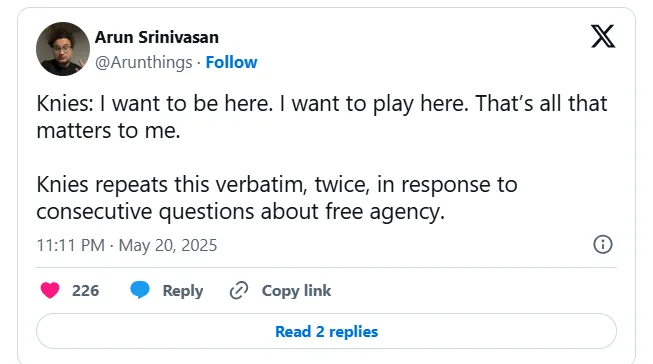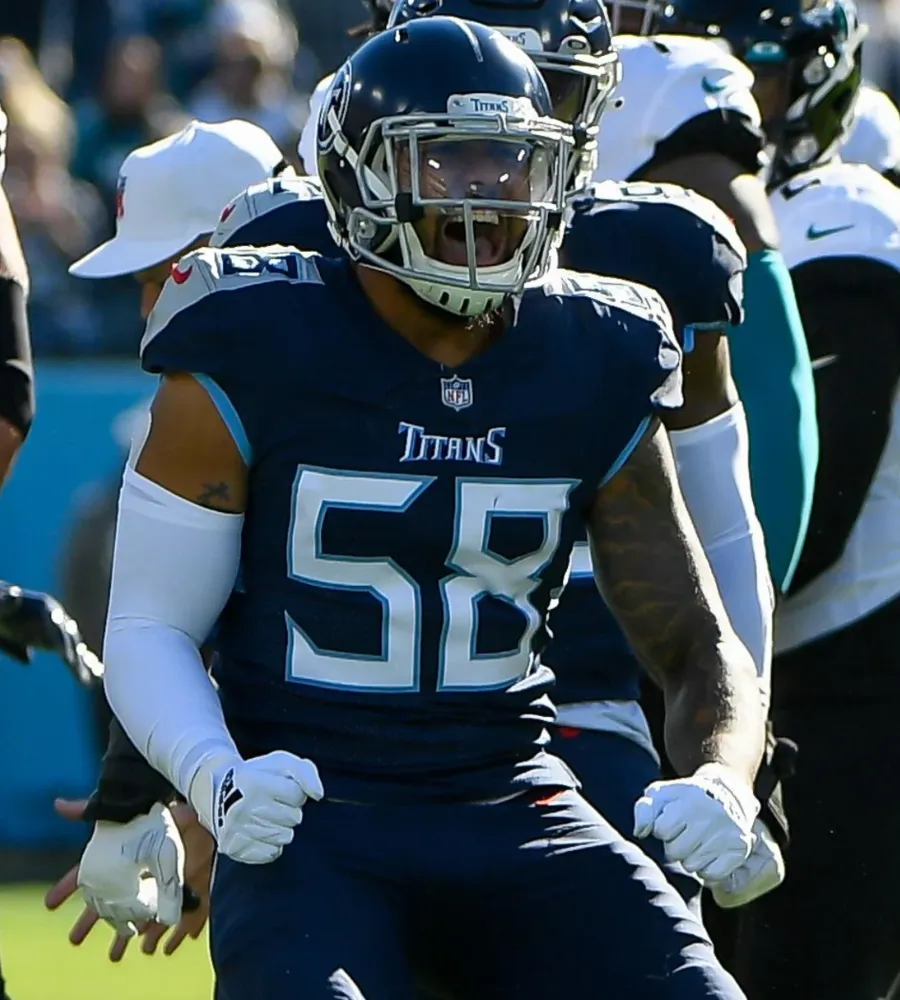It will be a summer of profound change for the Toronto Maple Leafs, or at least that’s what they’ve professed entering the offseason. Toronto is expected to make seismic alterations to its roster, as the Core Four era has almost certainly expired. Mitch Marner is testing free agency, John Tavares requires a new contract, while Matthew Knies and the Leafs are ‘far away’ in contract talks, Nick Alberga of The Leafs Nation reports.

There will be a flurry of activity for the Maple Leafs over the next two weeks. Here are some key questions facing the Maple Leafs ahead of the 2025 NHL Draft and the start of free agency on July 1.
How should the Maple Leafs allocate their cap space, with Marner almost certainly leaving?
Toronto is currently projected to hold $25.79 million in cap space for the 2025-26 season via PuckPedia. This is a misnomer of sorts, as the Maple Leafs will quickly have to allocate the extra funds available, with Auston Matthews, William Nylander, Max Domi, David Kampf, Calle Jarnkrok, Scott Laughton, Bobby McMann and Ryan Reaves as the returnees among the forward corps. Reaves’ role was completely minimized last year, Jarnkrok couldn’t find his game upon returning from injury and the Maple Leafs will likely need to make more than a few splashes in free agency.
Perhaps we’re burying the lede: Marner will certainly test free agency and it would be very unlikely at this point for him to return to the Maple Leafs. We’ll dive into this later in this piece, but the priority for Maple Leafs general manager Brad Treliving is to reach an extension with Knies, a 22-year-old power forward who is the bridge between the team’s current win-now window and an uncertain future. Aside from signing Knies to a deal that will make him one of the pillars of the franchise alongside Matthews and Nylander, how will the Leafs allocate their newfound cap space?
Toronto will assuredly try to target Florida’s trio of Brad Marchand, Sam Bennett and Aaron Ekblad. At the time of this filing, Marchand and Bennett appear likely to return to the Panthers, while Ekblad could be the most realistic option, although the Maple Leafs are returning seven defencemen under contract. Marchand, Bennett and Ekblad would all constitute the DNA change Treliving professed at his end-of-year media availability.
If the Maple Leafs can’t convince any of the three champions to join their team, Patrick Kane, Brandon Tanev, Reilly Smith and Andrew Mangiapane are among the next-best options. Kane boasts the championship pedigree the Leafs crave, Tanev would have an easy transition to the time, as would Smith, while Mangiapane could be the best value player on the market. Toronto could also submit a reasonable offer for Utah’s Jack McBain, as part of a sign-and-trade with the 25-year-old looming as a restricted free agent.
How long will it take for the Maple Leafs to reach an extension with Matthew Knies?
Knies is the future of the franchise and the lone homegrown star the team has developed since Matthews, Marner and Nylander burst onto the scene a decade ago. He has to be the top priority for the Leafs, as 22-year-old ascending power forwards are a luxury that every team in the league craves. Knies was arguably the Leafs’ second-best forward in the playoffs after Nylander and his combination of speed, power, scoring touch and physicality are assets that head coach Craig Berube craves. He’s an essential part of the power play and he took major strides as a penalty killer during the 2024-25 campaign. So what does an extension for Knies look like?
Dallas Stars forward Wyatt Johnston may be the closest comparable for Knies. It’s an inexact comparison, as Johnston is a better scorer, coming off consecutive 30-goal campaigns and he’s a few months younger than Knies. Johnston received a five-year extension worth $42 million on March 8, a deal that immediately grades out as one of the best value deals in the league. Although Johnston is the superior player at this juncture, it’s possible that Knies commands more money annually, with a longer term. It’s often been presumed that Knies wants an eight-year deal in the ballpark of $8 million annually.
There’s a delicate balance, but the indelicate part: sign Knies to an eight-year extension worth $8 million, and worry about the rest later. Knies will be worth the money for the duration of the deal, he’s still entering his prime, the cap is about to go up and it would set a strong precedent for the Leafs to reward homegrown stars, although this very principle is one of the reasons why the Core Four era ended in disappointment.

Knies wants to be with the Leafs, and frankly, it would be shocking if he doesn’t receive a new contract by the first week of July. The clock is ticking.
What will be the terms for John Tavares’ eventual extension?
Tavares is facing a unique set of circumstances: he’s one of the best free agents available, he’s coming off a 38-goal campaign, his offence largely dried up in the playoffs, he wants to remain with the Maple Leafs and hasn’t considered other teams, while teams are weary of paying a premium for a player entering his age-35 season.
Matt Duchene was perhaps the closest comparable to Tavares this summer, and he signed a four-year extension worth $18 million with the Dallas Stars on Thursday. Duchene recorded 30 goals and 82 points during the regular season for the Stars and has a similar offensive profile to Tavares. Would Tavares consider taking a deal that pays him $4.5 million annually? Objectively, Tavares is worth more than that, but Duchene has set a precedent, albeit with the benefit of playing in a state devoid of income tax.
Toronto wants to change its DNA, and the Core Four era began in earnest when Tavares signed a seven-year deal worth $11 million annually. There’s ample reason to suggest that Tavares could receive more money elsewhere, but he doesn’t want to leave the Maple Leafs. How do you account for loyalty and willingness to remain in negotiations, without hindering the rest of the roster composition? It’ll be compelling to see if Tavares signs a new pact with an AAV under $5 million.
Will the Leafs consider making a franchise-altering trade?
Everything is on the table this summer, as Matthews and Nylander should be the only players with some level of guarantee entering the fall. Could the Maple Leafs change their DNA in the form of a seismic trade?
Toronto boasts a surplus of NHL-calibre defencemen and Morgan Rielly could be the odd man out. Rielly, by all accounts, loves playing and living in Toronto and is the longest-tenured member of the Maple Leafs. He’s active in the Toronto community and has been an excellent ambassador for the franchise. Rielly also struggled for large stretches of the 2024-25 season, particularly in rush scenarios, and while there’s room to suggest that he improved when paired with Brandon Carlo, an awful showing from the pair during Game 5 and 7 losses to the Panthers dampened the outlook.
Could the Leafs reach a deal for K’Andre Miller or Bowen Byram? Perhaps Treliving could pursue a trade for Rasmus Andersson, a player he’s familiar with and would fit the profile of a contending Leafs team. Toronto opted for incrementalism rather than radical disruption throughout the Core Four era, and it never amounted to more than a second-round exit. All options are on the table, as uncomfortable as this prospect may be.

-1750424412-q80.webp)

